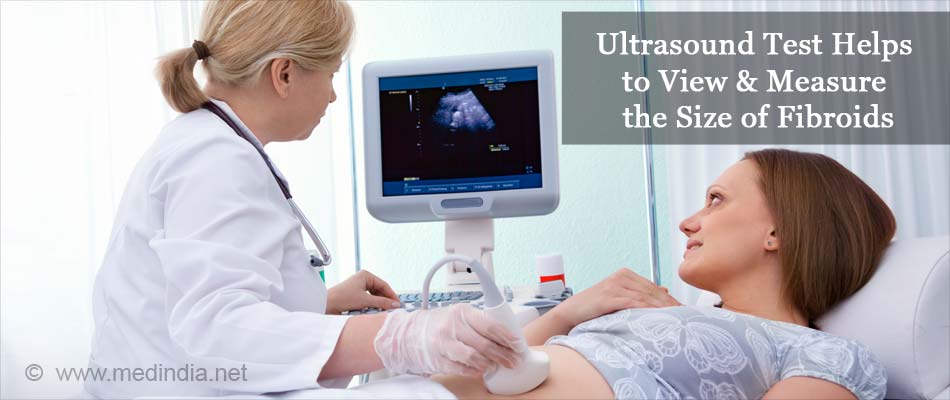What is Myomectomy?
Myomectomy is a surgical procedure to remove uterine leiomyomas (benign growths of the uterine muscle), also known as fibroids, while retaining the uterus. It is also known as fibroidectomy.
Myomectomy is a surgical procedure to remove uterine leiomyomas (benign growths of the uterine muscle), also known as fibroids, while retaining the uterus. It is also known as fibroidectomy.
Fibroids or fibromas are tumors of the female reproductive system. These are non-cancerous or benign tumors, except in very rare cases, where these could be cancerous. Size of the tumor may be as small as a pea or as large as a softball.
There are three main types of uterine fibroids:
In some cases, the subserosal or submucosal fibroids are pedunculated, i.e. they are suspended from a stalk inside or outside the uterus.
Depending upon the location, size and number of fibroids, the specific type of myomectomy surgery would be recommended.
Although fibroids are benign growths, they can still cause troublesome symptoms and may need to be removed. These include the following:
In most cases, myomectomy will provide relief from these symptoms, although there may be recurrence later.
The surgical approach usually depends on - Size, location, and number of fibroids.
Abdominal (Open) Myomectomy or Laparotomy– This procedure involves removal of fibroids through an abdominal incision. This surgery is reserved for large fibroids that are usually over 6 to 7 cms in size. Fibroids as large as 15 to 16 cms in size maybe removed through this approach.
The incision could be a horizontal or vertical cut, depending on the size of the fibroid. Open surgery helps the surgeon to view the pelvic organs which would otherwise be difficult to view, when a patient has large or multiple fibroids.
However, this procedure has the disadvantage of the necessity for a larger incision, general anesthesia, and risks like blood loss, pain, possible infection and longer recovery time.
This surgical procedure involves a hospital stay of about five to seven days and recovery period of six to eight weeks.
Hysteroscopy or Hysteroscopic Myomectomy – It involves removal of fibroids through the vagina. It is done for one or small multiple fibroids which are sub-mucosal and are projecting into the lumen of the uterus. Usually the fibroids are 2 to 3 cms in size.
There is no incision involved in this procedure. A long thin resectoscope (borrowed sometimes from urology department) with a telescope and light is passed through the vagina and cervix into the uterus.
The surgeon can look for fibroids and polyps through the hysteroscope lens. These are then removed using a heated wire loop followed by control of bleeding. The small pieces are evacuated and sent for biopsy.
The patients are discharged usually the same evening or the next day and the procedure can be done under regional anesthesia. The recovery time is about two to three days.
Laparoscopic or Robotic Myomectomy – In this procedure, the surgeon removes fibroids through small abdominal incision. Three to four small (less than 1 cm)incisions are used that are much smaller than an open procedure. There is less pain and blood loss after the procedure and early recovery. Usually this approach is taken for fibroids that are less than 5 to 6 cm and are projecting outside the uterus.
It generally involves only an overnight stay in the hospital.
Robotic myomectomy – is similar to laparoscopic myomectomy, except that the surgeon controls movement of instruments from a separate console.
The week before surgery
Before the surgical procedure, routine preoperative tests would be conducted
Other imaging tests to confirm the size and location of uterine fibroids include:
For this test, the technician makes the patient lie down and moves the ultrasound device over the abdomen or places it inside the vagina to get images of the uterus.
For this test, the patient will be placed inside a narrow tube, which may make the patient feel claustrophobic. The MRI machine makes loud clicking noises and the doctor would suggest wearing ear plugs to block these noises.
Before myomectomy, you must discuss with surgeon the following points:
Treatment with Gonadotropin-releasing hormone analogue (GnRH-a) injection before Surgery
For large fibroids a course of 2-3 injections over a period of three months of GnRHa (once a month) before myomectomy helps shrink the fibroids and reduces the risk of excessive bleeding during the surgery.
Day before and the morning of surgery
Recovery in hospital
Recovery at home
After being discharged from the hospital, the patient must take appropriate care at home, to recover from the surgery. The general suggestions advised by the surgeon would include:
Myomectomy has low risk of complications, as compared to other surgical procedures. The risks and complications could include the following:
Rupture of uterine scar during a later pregnancy or delivery
The surgeon may recommend the following measures to reduce or avoid complications:




